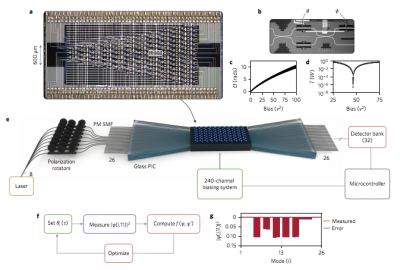
Nicholas C. Harris, Gregory R. Steinbrecher, Mihika Prabhu, Yoav Lahini, Jacob Mower, Darius Bunandar, Changchen Chen, Franco N. C. Wong, Tom Baehr-Jones, Michael Hochberg, Seth Lloyd and Dirk Englund
Abstract:
Environmental noise and disorder play critical roles in quantum particle and wave transport in complex media, including solid-state and biological systems. While separately both effects are known to reduce transport, recent work predicts that in a limited region of parameter space, noise-induced dephasing can counteract localization effects, leading to enhanced quantum transport. Photonic integrated circuits are promising platforms for studying such effects, with a central goal of developing large systems providing low-loss, high-fidelity control over all parameters of the transport problem. Here, we fully map the role of disorder in quantum transport using a nanophotonic processor: a mesh of 88 generalized beamsplitters programmable on microsecond timescales. Over 64,400 experiments we observe distinct transport regimes, including environment-assisted quantum transport and the ‘quantum Goldilocks’ regime in statically disordered discretetime systems. Low-loss and high-fidelity programmable transformations make this nanophotonic processor a promising platform for many-boson quantum simulation experiments.
